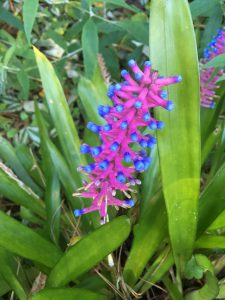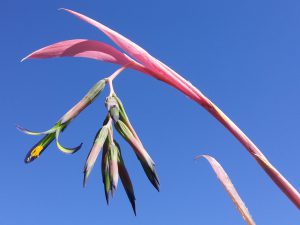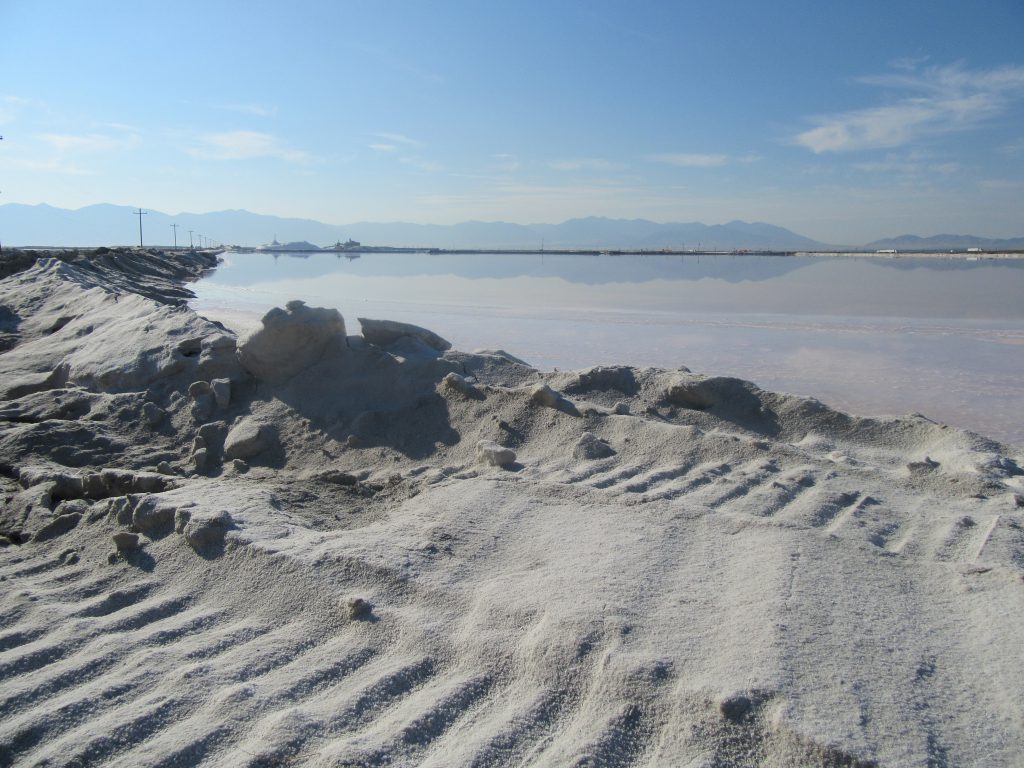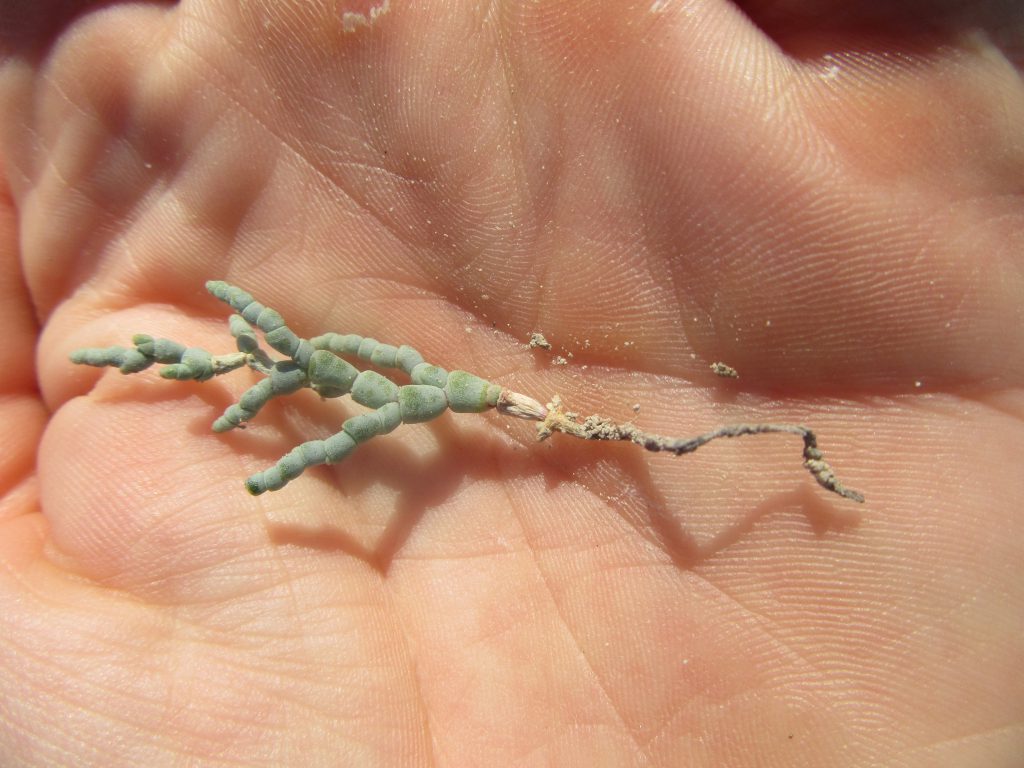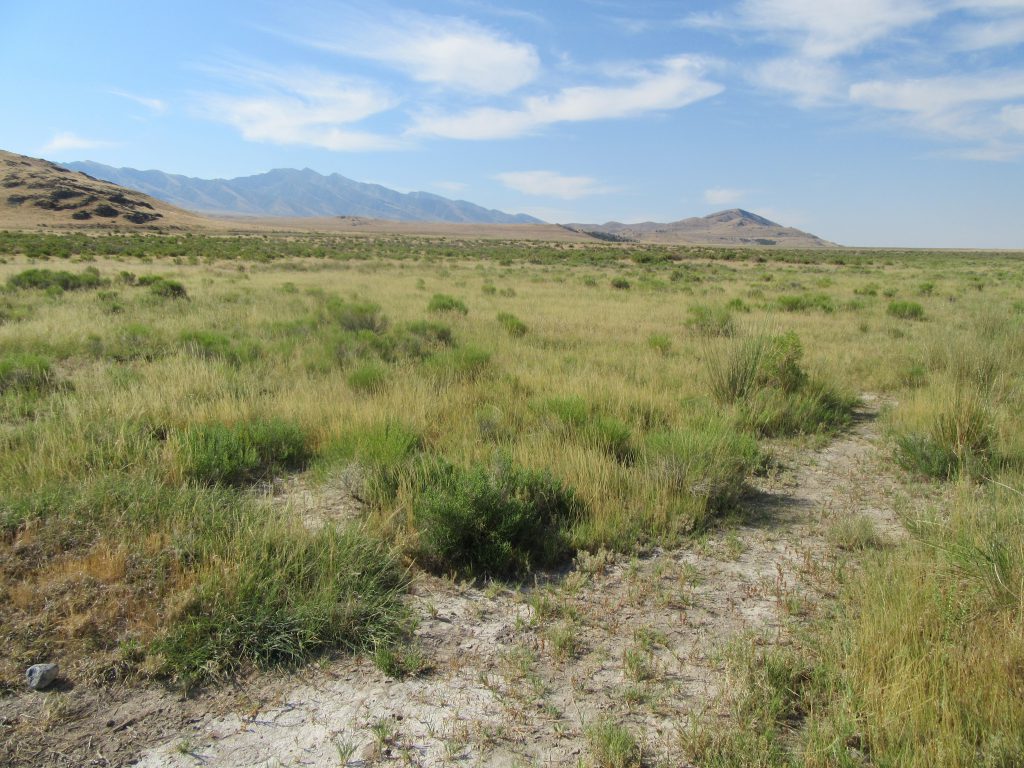
Cold-hardy Bromeliads for North Florida
Bromeliads are a type of succulent that are valued for bold foliage and colorful, exotic and long lasting flowers. Members of the bromeliad family (Bromeliaceae) originate in the tropical Americas in habitats ranging from rain forests to deserts. Bromeliad species are very diverse and include tree-dwellers like Spanish Moss as well as terrestrial plants like Pineapple.
Most colorful bromeliads are not winter hardy in the Florida Panhandle. However, two bromeliads in particular are cold hardy, vigorous, and provide colorful, exotic flowers in fall and winter in North Florida: Matchstick Bromeliad and Queen’s Tears. These two are easy to grow, tough, low maintenance plants and are fondly regarded as passalong plants here in North Florida.
Matchstick Bromeliad
The genus Aechmea contains many cold hardy bromeliads of which the most widely available is the Matchstick Bromeliad, Aechmea gamosepala. This small-growing Aechmea forms rosettes of nearly-spineless, stiff, medium green leaves about 8 inches tall and wide. Each tightly clustered rosette of foliage forms a “tank” which holds water for the plant to absorb during dry weather. In late Fall and Winter, each rosette can produce a colorful scape of flowers held just above the foliage. Long, narrow flowers are attached up and down the spike and are pink/purple with blue tips, looking somewhat like psychedelic matchsticks. This bromeliad is one of the most cold hardy, tolerating temperatures as low as 20°F for short periods. Best of all, Matchstick Bromeliad quickly forms offsets of foliage rosettes that are easily separated, planted and shared.
Queen’s Tears
The genus Billbergia also contains many cold hardy bromeliads and one of the most popular is Queen’s Tears, Billbergia nutans. Queen’s Tears blooms in mid-winter with arching stems bearing bright pink bracts and tipped with fantastic dangling flowers of green petals edged in blue around a long column of yellow stamens. Allegedly, the beautiful flowers drip nectar when disturbed, thus providing the common name of Queen’s Tears. This bromeliad consists of slender, grey-green, leathery foliage that forms long, narrow rosettes 10 to 18 inches tall, giving the plant a graceful and arching habit. Truly one of the most cold hardy bromeliads, Billbergia nutans reportedly tolerates temperatures in the low teens, making it hardy in USDA Hardiness Zone 8a. Plants of Queen’s Tears grow quickly and form numerous offsets that can rapidly fill a pot to the point of almost bursting. This quality makes it easy to separate clumps to share with all your friends and family, and giving the plant its other common name of “friendship plant”.
Some other Billbergia species are almost as hardy, and some of these feature spotted or variegated leaves. Other bromeliads with good cold hardiness are Dyckia, Neoregelia and Vriesea species.
Care and Culture
Bromeliads are easy to grow and often tolerate some neglect. Most are adapted from part sun through shade, and are tolerant of drought and low moisture conditions. Bromeliads grow best in containers or well-drained soils but also may be mounted on boards, fences, trees or palm trunks. Most have limited root systems because their foliage rosettes form a “cup” that collects, holds and absorbs water as well as debris that breaks down into nutrients for the plant. Bromeliads have low nutrient requirements but will grow faster with light applications of fertilizer (to the roots, not in the foliage tanks). Though these two bromeliads are cold hardy down to 20°F, it’s best to grow them in protected areas so as to avoid damage from freezes that are colder than expected.
For more information:
Bromeliads at a Glance: https://edis.ifas.ufl.edu/ep337
Bromeliad Society International: BSI | Bromeliad Society International

